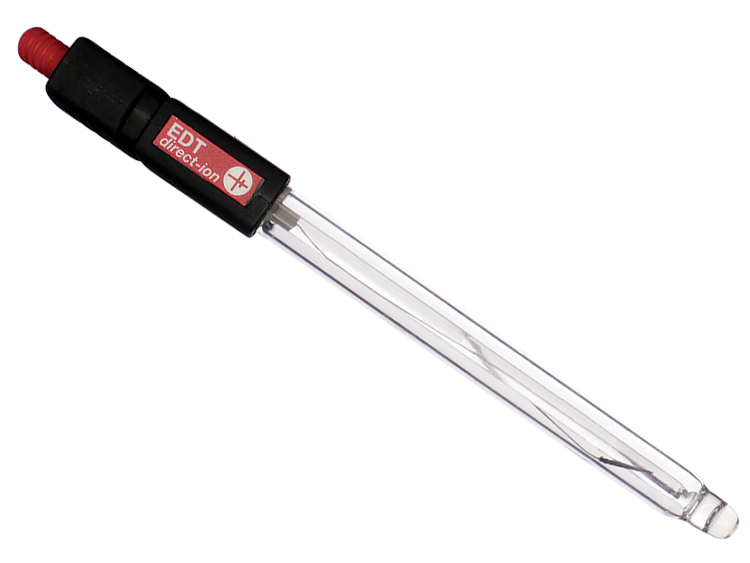A standard glass pH half cell electrode with a 12mm body. The EDT pH Electrode requires a separate reference electrode.
The choice depends on the application being undertaken. The classical set up for laboratory work is using a calomel reference half-cell. Recently due to the problems associated with Mercury disposal and possible contamination many applications use a standard Ag/AgCl reference.
Both have their advantages and leach out KCl into the sample solution. Though the traditional use of Double Junction reference Electrodes is for analysis using an ISE it is often practical to use one for sensitive pH applications where you can dictate the concentration and type of electrolyte that leaches into the sample.
Most pH analysis is performed using combination electrodes however the practice of using two separate electrodes does provide a greater likelihood of accuracy. This is due to the pH electrode having a larger glass bulb leading to increased sample contact with a finer glass bulb. The separate reference also has a larger reservoir of filling solution and a larger junction leading to greater stability and longer lifetime.
In addition when combination electrodes fail due to the reference failure the sensor is immediately rendered useless. Using Half-cells allows the operator to replace the faulty unit and retain the working unit.
EDT pH electrodes are blown in the UK from high quality low resistance glass ensuring a rapid response and excellent stability.
To view a simple calibration click here.
Most pH calibrations are performed using two buffers solutions. The E8082 pH half-cell comes complete with a 1 metre lead and a BNC connector making it compatible with all EDT pH meters and most other modern instruments.
Additional information
| Weight | 0.15 kg |
|---|---|
| Dimensions | 26 × 9 × 4 cm |
| Length | 155mm |
| Diameter | 12mm |
| Cap Diameter | 16mm |
| Connector | BNC |
| Cable Length | 1m |
| Body Type | Glass Body – Glass Bulb |
| pH Range | 0-14 |



Reviews
There are no reviews yet.